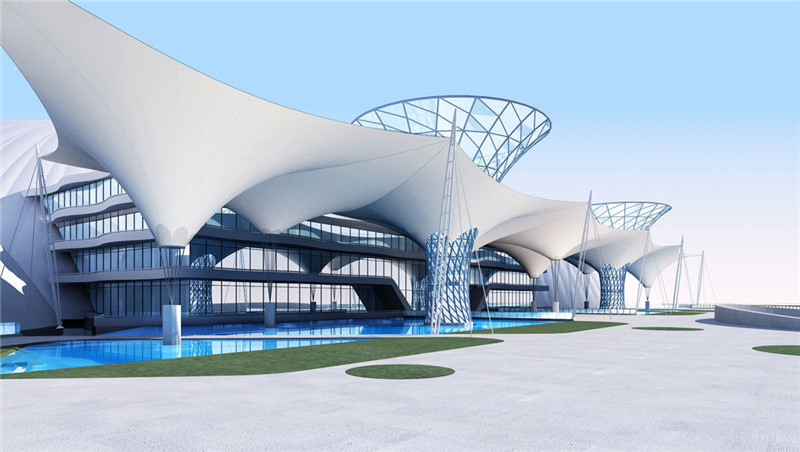Tensile fabric structures offer compelling advantages in sustainability, making them a preferred choice in modern architecture. These structures embody sustainable principles through their design, construction, and operational efficiency.
One key aspect of sustainability in tension fabric structures is their minimal environmental footprint during construction. Unlike traditional building materials such as concrete or steel, fabric membranes require fewer resources and generate less waste. Additionally, many fabric materials used in these structures are recyclable, promoting a closed-loop approach to materials management.
Moreover, the lightweight nature of tensile fabric structures contributes to energy efficiency. By utilizing translucent membranes that allow natural light penetration, these structures reduce the need for artificial lighting during daylight hours, thus lowering energy consumption. Furthermore, the reflective properties of certain fabric coatings help regulate internal temperatures, reducing reliance on mechanical heating and cooling systems.
In terms of operational sustainability, tension fabric structures are often designed with flexibility and longevity in mind. Modular construction techniques allow for easy disassembly and reassembly, facilitating adaptation to changing needs or relocation without significant material waste. This adaptability extends the lifespan of the structure, maximizing its utility over time.
From a user perspective, the aesthetic and functional benefits of tensile fabric structures contribute to sustainable urban development. These structures create inviting public spaces that promote social interaction and community engagement, enhancing the quality of urban life while minimizing environmental impact.
In conclusion, sustainability is a defining characteristic of tension fabric structures, integrating environmental responsibility with architectural innovation. By embracing lightweight materials, energy-efficient design principles, and adaptable construction techniques, these structures exemplify a sustainable approach to modern architecture.


